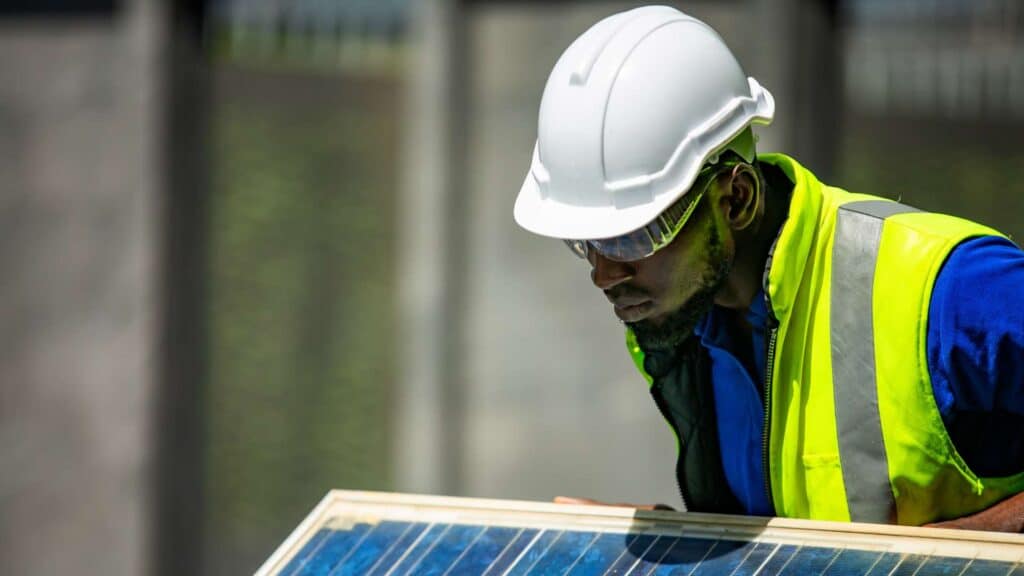Table of Contents
Solar energy is gaining ground with homeowners aiming to cut their carbon footprints and energy bills. Governments worldwide, including the United States of America, have developed various programs that encourage the use of solar power. Although one can easily get carried away with having ‘free’ solar panels, numerous government schemes and promotions exist to make solar panels affordable, mainly with a few taps in your home. Let’s explore how to get free solar panels from the government.
How to Get Free Solar Panels from the Government: Programs and Incentives
The government offers different incentives to increase solar energy adoption. Its key objectives include the following: The solar programs work to reduce the cost of putting up solar installations and make them familiar in the market.
Types of Solar Incentives Available in the US
- Federal Tax Credit: The federal government offers a huge tax credit for solar development. The Investment Tax Credit (ITC) permits homeowners to offset 30% of the expense of installing solar energy in their house against their federal taxes.
- State and local rebates: Most states and municipal governments offer further incentives, such as rebates or tax credits, to lower the cost of solar panels.
- Performance-Based Incentive (PBI): These programs pay incentives based on how much electricity your solar system produces.
- Solar Renewable Energy Certificates (SRECs): Homeowners can earn SRECs from the electricity produced by the solar panels installed on their homes, and such credits can be sold to utilities with compliance obligations regarding renewable power generation.
Benefits of Installing Solar Panels with Government Support
- Lower Upfront Costs: State and federal programs may help cover a substantial part of the installation costs, making solar panel systems cheaper.
- Lower Energy Bills: They help you reduce your electricity subheading, allowing you to save in the long run.
- Environmental Impact: Solar energy effectively reduces outstanding carbon levels and helps clean the environment.
- Increased Home Value: People with solar panels in their homes experience increased demand for their properties and have better value additions.
Can You Get Completely Free Solar Panels?
While entirely free solar panels are uncommon, government programs can make them practically accessible or highly affordable to qualifying families.
Demystifying “Free” Solar Panels and Government Programs
“Free solar panels” frequently refer to programs that cover the initial installation cost but require recurring costs or commitments. It is critical to understand these programs and study the fine print.
Understanding the True Costs of Solar Panel Installation
Even with government subsidies, there may be fees for installation, maintenance, and system updates. Before committing, make sure you get a complete analysis of anticipated expenses.
Tax Credits and Rebates vs Full Panel Coverage
Federal and state tax credits and rebates can significantly lower the cost of solar panel installations, but they rarely pay the entire cost. Understanding the distinction between initial cost savings and ongoing savings is critical.
How to Qualify for Government Solar Incentives
Qualifying for government solar incentives frequently requires meeting particular income, location, and house energy efficiency requirements.
Federal Tax Credits for Solar Energy Systems
The federal solar tax credit is offered to any household that installs a solar energy system. To qualify, you must install a solar photovoltaic (PV) system during 2022-2032.
State and Local Programs by Region and Eligibility
State and local incentives differ significantly. Some states provide additional tax credits, rebates, or subsidies for solar systems. For information on specific programs available in your area, contact your state’s energy office or visit the local government website.
Low-Income Solar Assistance Programs
Specific programs, such as California’s Disadvantaged Communities—Single-Family Solar Homes (DAC-SASH) and Maryland’s Solar Energy Equity Grant Programme, are tailored to low-income households. These programs can help eligible families pay for a significant percentage of their expenses.
Finding the Right Solar Panel Program for You
With many available programs, exploring and comparing your options is critical to discovering the best fit.
Research and Compare Available Incentives
Begin by examining your area’s federal, state, and municipal incentives. For complete program information, consult online resources such as the Database of State Incentives for Renewables and Efficiency (DSIRE).
Match Your Needs with Program Requirements
Each program has unique eligibility conditions. Ensure that you fit these criteria and that the program is appropriate for your financial condition and energy requirements.
Consult with Qualified Solar Installers
A qualified solar installer can help you navigate numerous incentives and programs. They may also offer professional advice on the best solutions for your house and assist with the application procedure.
Application Process for Solar Incentives
Applying for solar subsidies entails multiple processes, including gathering documents and coordinating with your installer.
Common Application Steps and Documentation
Initial Consultation
Discuss your energy requirements and budgetary circumstances with a solar installation.
Site Assessment
The installer will assess your home’s suitability for solar panels.
Estimated and Proposed
You’ll get a total estimate that includes the cost of the system, possible savings, and available incentives.
Application Submission
Complete federal, state, and municipal incentives applications. This could involve providing proof of income, homeownership, or energy consumption.
Working with Your Solar Installer for Program Eligibility
Your installer can help you process all necessary documents for the program and fulfill all requirements. They can also inform you of any other bonuses that you may be able to claim.

Tax Filing Requirements for Solar Tax Credit
The federal solar tax credit should be claimed on a tax return, with IRS Form 5695 submitted with the tax return. Your installer should provide written information regarding the expenses of the solar PV system to be installed and the credit to be received.
Alternatives to Affordable Solar Panels
If the above options do not suit you or you do not meet the requirements of receiving government subsidies, there are ways to use solar energy efficiently and make it relatively cheap.
Solar Panel Leases and Power Purchase Agreements (PPAs)
A solar lease is an agreement with a provider where you will pay a fixed monthly fee to utilize solar panels mounted on your roof. In a PPA, the electricity generated by the panel is purchased or bought at a fixed price. Both solutions usually come with a low or no initial cost but tie the client into a long-term commitment with monthly subscription fees.
Community Solar Programs and Benefits
In community SAPs, several families benefit from one system compared to having an individual one. These programs may be excellent if the home is unsuitable for solar panels or if turning the property into an eyesore with the panels is not desirable.
Finance Options for Solar Panel Installation
There are ways to subsidize solar systems, including solar loans. These loans often have very appealing terms and interest rates, and you can pay for the expenses of their usage for a few years after using solar energy savings.
Long-Term Benefits of Solar Energy
There are potential benefits to embracing solar energy in the long term, both financially and to the environment.
Savings on Electricity Bills and Energy Independence
Solar panels are a good investment now. They will assist you in increasing your savings and even reduce your electricity bill significantly. This way, you are only partially dependent on the grid as your source of power, and thus, you are protected from fluctuating energy costs that characterize the grid supply option.
Increased Home Value and Environmental Sustainability
Most properties whose owners install solar panels realize higher property values. Solar energy also reduces the emission of greenhouse gases and, therefore, contributes to developing a healthy living environment.
Understanding Long-Term Maintenance and Upkeep Costs
Though the need for care regarding solar panels is limited, some perennial costs include cleaning and inverter issues. Maintenance of the system is very important to ensure that it works effectively, gives the best expected results, and greatly enhances the system’s life span.
Conclusion
Subsidies offered by the government help subsidize solar energy costs to homeowners and administer programs promoting solar energy. Knowing your choices and working with a proper installation to acquire affordable solar while getting the distant advantages of green power is essential.
For any financial aid, you can check out Beem. It is a smart wallet app with numerous features, from cash advances to help with budgeting and even tax calculations. In addition, Beem’s Everdraft™ lets you withdraw up to $1,000 instantly and with no checks. Download the app here.
FAQs About How to Get Free Solar Panels from the Government
Do I qualify for free solar panels from the government?
Free solar panels are generally only available to specific low-income solar program participants. Review the requirements of federal, regional, and local incentives to see if you qualify for the offer.
Are there any hidden costs to consider with government solar programs?
While government programmes can considerably lower the cost of solar panels, other charges, such as maintenance or system improvements, may apply. Before committing, always receive a detailed breakdown of prospective expenses.
What are some alternatives if I don’t qualify for free solar panels?
If you are not eligible for free solar panels, try exploring solar leases, PPAs, communal solar programs, or solar loans. These alternatives can help keep solar energy cheap and available.














































